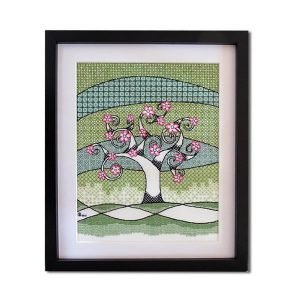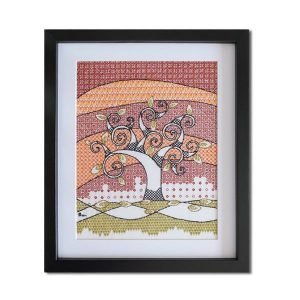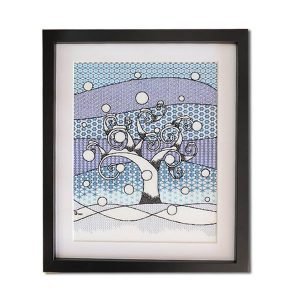[tx_heading style=”default” heading_text=”The History of Blackwork Part Two” tag=”h2″ size=”24″ margin=”24″ align=”center”]
There aren’t many surviving examples of Blackwork from the 15th Century because the embroidery was usually stitched onto clothes and household items, which from constant use would eventually have worn out and been thrown away. Also the iron (Ferrous Sulphate) that was used to dye the thread black would deteriorate into an unattractive blackish brown.
Modern Blackwork
These days Blackwork is used as an embroidery technique to create pictures. Different thicknesses of black thread is used to create shadings with the fill patterns in the pictures. Sometimes a metallic thread is added as a highlight feature.
Slowly Blackwork has become more colourful, but I couldn’t find any brightly coloured designs that I liked so I started to design them myself. This is how the Blackwork Company started with my first designs being the Trees series of kits.
[tx_row]
[tx_column size=”1/4″] [/tx_column]
[/tx_column]
[tx_column size=”1/4″] [/tx_column]
[/tx_column]
[tx_column size=”1/4″] [/tx_column]
[/tx_column]
[tx_column size=”1/4″] [/tx_column]
[/tx_column]
[/tx_row]
[tx_heading style=”default” heading_text=”Further Readings” tag=”h2″ size=”18″ margin=”24″ align=”left”]
Blackwork, Lesley Barnett
Embroidery Ideas From Blackwork, Pat Langford
Blackwork Embroidery Design and Technique, Margaret Pascoe
